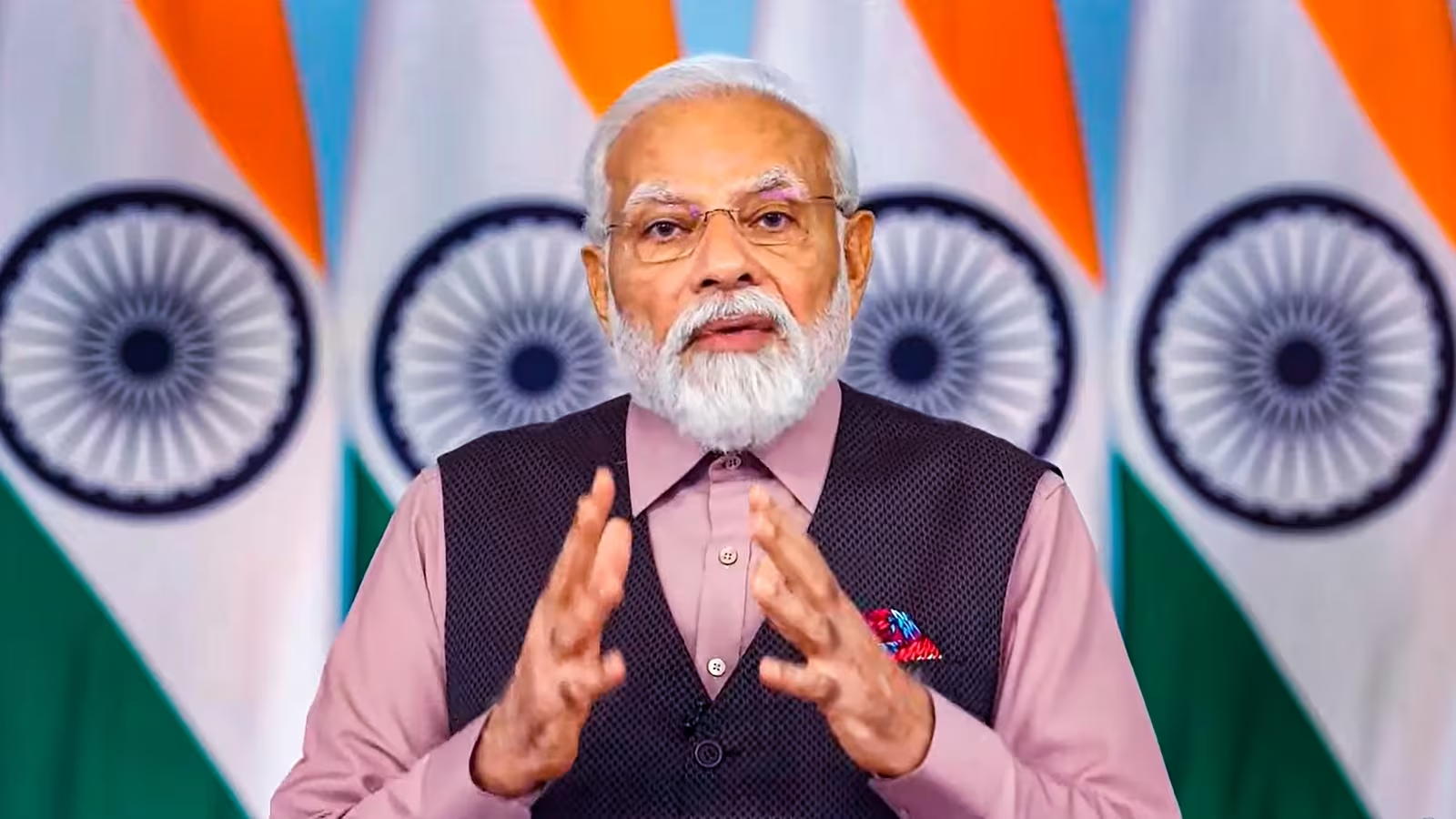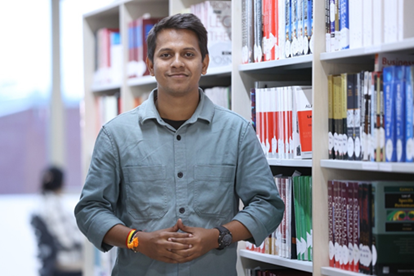The Indian government led by Prime Minister Modi has undertaken a number of significant initiatives with the goal of alleviating poverty and enhancing the living standards of its citizens. These carefully planned and implemented programs have resulted in uplifting approximately 25 crore individuals out of multidimensional poverty. This remarkable accomplishment vividly demonstrates the government’s steadfast dedication to addressing the multifaceted aspects of poverty and enhancing the overall welfare of the populace. Through the implementation of targeted policies and initiatives, the government has made substantial progress in diminishing poverty and enhancing the quality of life for millions of people throughout the nation.
The government of India has embarked on a number of far-reaching initiatives designed to tackle a range of societal issues and propel economic growth. These programs span a wide array of sectors, including finance, housing, energy, manufacturing, and digital infrastructure.
The Pradhan Mantri Jan Dhan Yojana (JDY) has been exceptionally successful in extending banking services to the unbanked population in India. With over 50s+ crore accounts opened and total deposits exceeding Rs. 2 lakh crore, the scheme has made significant strides in financial inclusion. Notably, 55.6% of account holders are women, highlighting the empowerment this initiative brings. Moreover, with 66.7% of accounts in rural and semi-urban areas, PMJDY has genuinely reached the grassroots, fostering economic growth in these regions. The continuous increase in the number of accounts showcases the program’s effectiveness in reaching underserved communities and promoting savings culture among the masses.
The Pradhan Mantri Awas Yojana (PMAY), the housing scheme, has been instrumental in providing affordable housing to millions of Indians. With more than 1.18 crore houses sanctioned in urban areas and 1.92 crore under construction in rural, PMAY is addressing the housing needs of both urban and rural populations. The Union Budget 2024 announced another 2 crore homes under PMAY (Rural) and increased the allocation for the scheme, which shows the commitment of the government to provide shelter for all. The staggering investment of ₹8.31 Lakh Crore in PMAY-U demonstrates the government’s vision to address the housing shortage in the country. Not only has PMAY led to the construction of houses, but has also created jobs and fueled economic growth, as evidenced by the consumption of cement, steel, and the generation of 239 lakh jobs. The completion and delivery of over lakh houses to beneficiaries signify the tangible impact of this scheme on people’s lives.
The Ujjwala Yojana’s initiative to provide over 10 crore LPG connections to Below Poverty Line households has been transformative in improving livelihoods and health outcomes. By reducing reliance on traditional cooking fuels, the scheme has significantly enhanced indoor air quality and decreased health risks associated with smoke inhalation. The positive impact on households, women and children, cannot be overstated. The Ujjwala Yojana has not only provided access to clean cooking fuel but has also brought about a socio-economic transformation in many rural and underprivileged households.
Make in India has been a pivotal initiative in boosting manufacturing and creating opportunities in the country. The substantial foreign direct investment inflows, reaching record highs, year after year, reflect investor confidence in India’s business environment. With FDI inflows standing at US $ 45.15 billion in 2014-2015 and climbing to $83.6 billion in 2021-22, Make in India has played a crucial role in positioning India as a preferred investment destination globally. The program’s success in attracting investments across various sectors underscores its role in driving economic growth and employment generation.
Digital India’s comprehensive approach to expanding digital infrastructure and governance services has been transformative in bridging the digital divide and enhancing access to online platforms. By focusing on rural areas, Digital India has facilitated digital literacy and connectivity, enabling citizens to access essential services such as education, healthcare, and financial transactions. Program’s impact on empowering citizens with digital tools and enhancing government services underscores the government’s commitment to building digitally inclusive society.
These schemes exemplify the government’s dedication to inclusive development, economic growth, and improving the quality of life for all citizens. Each initiative has brought about tangible benefits, from financial inclusion and housing security to energy access and digital empowerment, showcasing the positive impact of government policies on the lives of millions of people across the country.
The Indian government has implemented a series of flagship welfare programs aimed at uplifting the most marginalized sections of society. These initiatives have had a profound impact, lifting twenty-five crore people out of multi-dimensional poverty and providing essential support to the vulnerable. The PM Garib Kalyan Anna Yojana, for instance, has ensured that 80 crore people receive free food grains, guaranteeing that no one goes to bed hungry. By addressing such fundamental needs, these programs have bolstered social security and enhanced the quality of life for millions across the nation.
Under the ‘Housing for All’ initiative, the government has demonstrated its commitment to shelter for all citizens, particularly those in urban and rural areas. With over four crore houses sanctioned through the PM Awas Yojana, significant progress has been made in addressing the housing shortage in the country. Furthermore, the promise of 100% electrification in villages and the Jal Jeevan Mission’s efforts to provide safe tap water to over 14 crore rural households underscore the government’s focus on improving infrastructure and the quality of life for all.
Healthcare access has been a key priority for the government, as evident in the PM Jan Arogya Yojana (PM-JAY), the world’s largest health insurance plan funded by the government. Covering nearly 55 crore individuals from vulnerable families, this scheme acts as a crucial safety net, preventing medical emergencies from plunging families into financial hardship. By ensuring that health services are accessible to all, the government has taken significant steps towards achieving ‘Health for All’.
In the agricultural sector, the government’s dedication to farmer welfare is evident in the substantial increase in the agriculture budget, reaching Rs. 1.27 lakh crore in 2024-25. This represents a remarkable 300% increase since 2014-15, reflecting the government’s commitment to supporting the farmers. The PM-KISAN scheme, benefitting over 11 crore farmers with Rs. 2.6 lakh crore in assistance, has provided crucial financial support to agricultural households. Additionally, the government’s focus on promoting entrepreneurship among farmers is evident in the emergence of 7,000 agriculture and allied startups, highlighting the efforts to transform agriculture and create new opportunities in the sector.
Economically, welfare programs also play a vital role in maintaining stability and resilience, especially during economic downturns. Reports from the Economic Policy Institute emphasize the stimulative effect of social safety net programs on the economy, showcasing how programs like unemployment insurance and nutrition assistance not only support individuals and families but also contribute to broader economic stability.
Thus, the comprehensive evidence presented clearly demonstrates the indispensable role of government welfare programs in addressing the needs of vulnerable populations, enhancing safety nets, and fostering inclusive growth and development. The proactive measures taken by governments in implementing and sustaining these programs are crucial for promoting social equity, economic stability, and overall national well-being.
According to a recent report by NITI Aayog, an impressive 24.82 crore individuals in India have successfully lifted themselves out of multidimensional poverty over a span of nine years up to 2022-23. This significant progress has resulted in a noticeable decline in multidimensional poverty rates in the country, going down from 29.17% in 2013-14 to 11.28% in the latest assessment.
The national approach to measuring multidimensional poverty comprises a comprehensive analysis of health, education, and standard of living factors through 12 key indicators aligned with Sustainable Development Goals (SDGs). These crucial indicators encompass aspects such as nutrition, child and adolescent mortality, maternal health, education levels, access to basic amenities like clean water and sanitation, as well as ownership of assets and financial inclusion.
The sophisticated National Multidimensional Poverty index (MPI), designed by NITI Aayog, employs the Alkire Foster methodology to evaluate the progress in poverty alleviation efforts. Noteworthy is the fact that the Indian MPI covers 12 indicators, two more than the global MPI which covers 10 indicators, showcasing a more holistic approach to assessing poverty.
At a state level, Uttar Pradesh emerges as the front-runner with 5.94 crore individuals breaking free from poverty, closely followed by Bihar with 3.77 crore and Madhya Pradesh with 2.30 crore. The report highlights that all 12 indicators of multidimensional poverty have displayed notable improvements during this period, illustrating a comprehensive transformation across various key areas of well-being.
During a press briefing following the report’s release, NITI Aayog member Ramesh Chand noted that the substantial success of 24.82 crore people escaping multidimensional poverty over nine years translates to an average of 2.75 crore individuals lifting themselves out of poverty annually. This data underscores the substantial efforts and positive impact of poverty-alleviation initiatives in the country, signaling a promising trend towards a more prosperous and equitable society.
The decline in poverty rates in India recently can be credited to a mix of government programs, economic growth, enhanced access to education and healthcare, and a shift towards more comprehensive development. This favorable trend reflects a wider societal push to address poverty through diverse initiatives, collaborations, and economic opportunities, ultimately improving the overall welfare of individuals and communities. Sustaining this progress and prioritizing long-term solutions is essential to continue the battle against poverty, ensuring that advancements are inclusive and reach those most in need. Regular assessment and research remain critical for monitoring the impact of measures to alleviate poverty and shaping future policy strategies for ongoing enhancement.
About the Author:
Alok Virendra Tiwari holds a bachelor’s degree in political science from Mumbai University. He was part of Delegate Affairs Team of Youth 20 (Y20). He is currently part of the Chanakya Fellowship in Social Sciences at Chanakya University, Bengaluru. Views expressed are personal.
(The views expressed are the author's own and do not necessarily reflect the position of the organisation)


